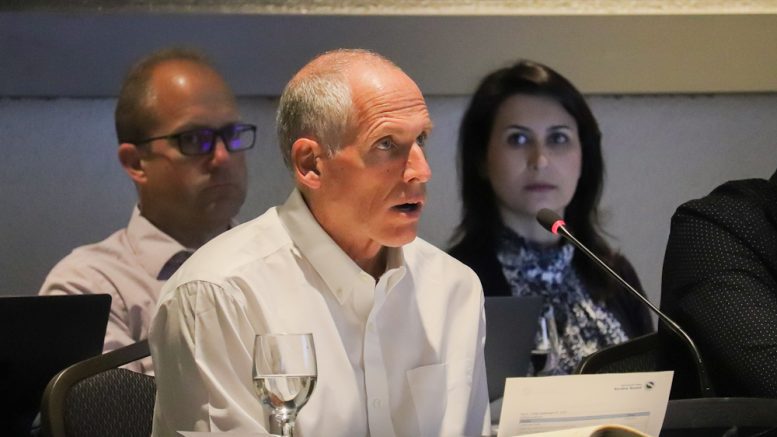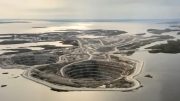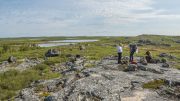“The Project is likely to result in significant adverse impacts.”
Those words are bolded in a recent report issued by the Mackenzie Valley Review Board on a proposed change to Diavik mine’s closure plan.
That change would see 5 million cubic metres of processed kimberlite—the material that contains diamonds—stuffed back into one of the mined out pits.
After that, the closure team would breach the dikes holding back Lac de Gras and flood the pit.
Through a process called meromixis, the Diavik team expects the water at the bottom of the water column, near the processed kimberlite, would create a natural cap due to its different chemistry. At a public hearing in September, Diavik said this would allow the top 40 metres of the water column (where it assumes most fish live) to meet water quality criteria. At the time, Gord Macdonald, Diavik’s closure manager, also said water below that likely wouldn’t meet quality benchmarks.
Ultimately, the review board approved the proposal with six additional measures:
- Ensure that water in the pit lake(s) meets new water quality objectives
- Collaboratively develop criteria for judging if water will be good for cultural use
- Update water quality modelling
- Establish an independent review panel to improve updated modelling
- Conduct additional and more effective engagement with potentially affected Indigenous communities
- Develop community-specific indicators of well-being and adaptively manage project-specific and cumulative impacts on cultural use of Lac de Gras
In its report, the board wrote, “Indigenous people indicate they lack certainty about the impacts of the Project. This makes them question the future quality and safety of the area and means that they are less likely to use it. They lack this certainty because Diavik has not properly assessed or mitigated the potential for impacts on cultural use.”
During the public hearing, Patrick Simon, deputy mayor of Deninu K’ue First Nation, said Diavik is reponsible for the land it developed “from the cradle to the grave.”
Diavik response
A spokesperson for the mine said it welcomes the board’s approval of the amended water license.
In an email, they added, “We thank the communities that have provided input as part of the Mackenzie Valley Review Board process and will look to work closely with them as we implement the Board’s measures.”
As for water quality measures, the spokesperson said the closure team will only proceed with putting the processed kimberlite back into the pits if the updated, independently-reviewed modelling shows it is safe to do so. And the dikes will only be breached if the ongoing water quality monitoring results meet the required quality benchmarks.
Whether this moves ahead at all now lies in the hands of Lands Minister Shane Thompson. His decision is expected to come in the early summer.









